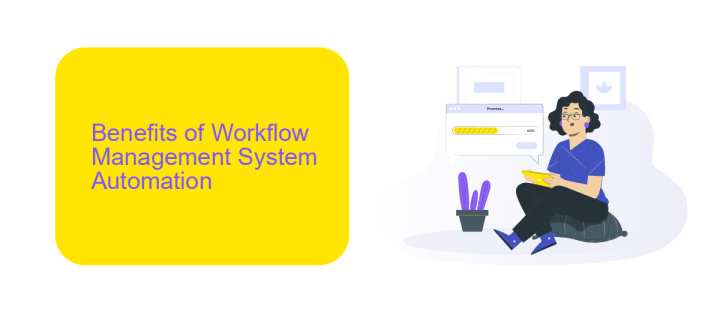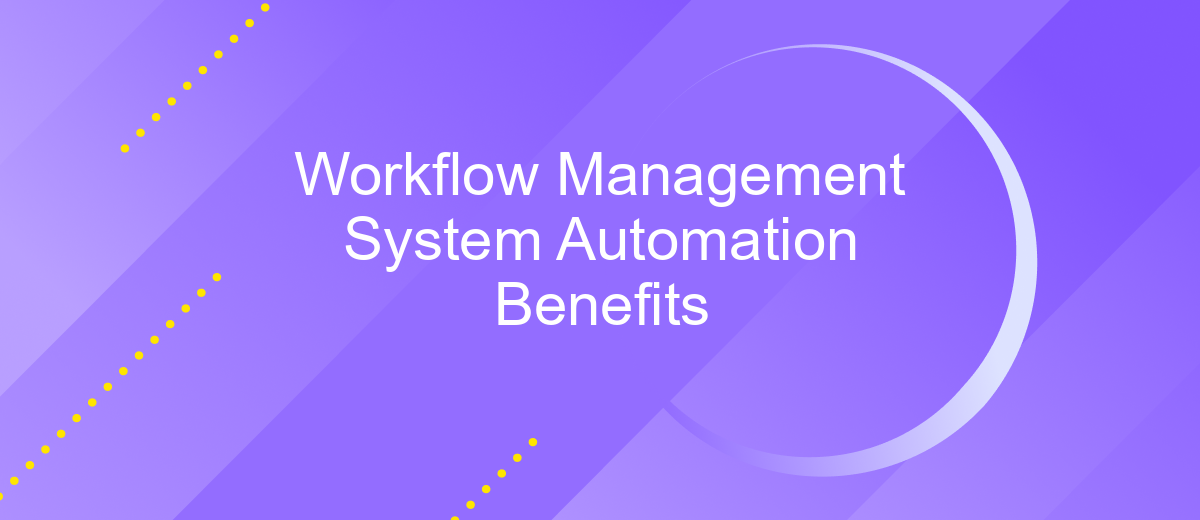Workflow Management System Automation Benefits
In today's fast-paced business environment, Workflow Management System (WMS) automation has become a crucial tool for enhancing efficiency and productivity. By automating repetitive tasks, reducing human error, and streamlining processes, WMS automation empowers organizations to focus on strategic initiatives, improve collaboration, and achieve better outcomes. This article explores the key benefits of adopting WMS automation and how it can transform your business operations.
Introduction
In today's fast-paced business environment, organizations are continually seeking ways to optimize their processes and enhance productivity. Workflow Management Systems (WMS) have emerged as a critical tool in achieving these objectives by automating routine tasks and streamlining operations. Automation in WMS not only reduces manual errors but also significantly accelerates task completion times, allowing employees to focus on more strategic activities.
- Increased efficiency and productivity
- Reduction in operational costs
- Improved accuracy and consistency
- Enhanced collaboration and communication
- Better compliance and audit trails
One of the key advantages of modern WMS is their ability to integrate seamlessly with other business tools and applications. Services like ApiX-Drive facilitate these integrations by providing a user-friendly platform to connect various systems without the need for complex coding. This capability ensures that data flows smoothly across different departments, enhancing overall organizational efficiency.
Benefits of Workflow Management System Automation

Implementing a Workflow Management System (WMS) automation can significantly enhance operational efficiency by streamlining repetitive tasks and reducing human error. Automation ensures that tasks are completed consistently and on time, which improves overall productivity and allows employees to focus on more strategic activities. Additionally, automated workflows provide better visibility into the process, making it easier to identify bottlenecks and optimize performance.
Another key benefit of WMS automation is seamless integration with other business tools and systems. Platforms like ApiX-Drive facilitate this by enabling easy and efficient connection between various applications, ensuring data flows smoothly across the organization. This not only saves time but also enhances data accuracy and consistency. By leveraging these integrations, businesses can create a more cohesive and efficient operational environment, leading to improved decision-making and better resource management.
How to Automate Workflows

Automating workflows can significantly enhance efficiency and reduce manual errors. To begin, identify repetitive tasks that can be streamlined through automation. This involves understanding the current workflow and pinpointing areas that are time-consuming or prone to mistakes.
- Map out the existing workflow to identify bottlenecks.
- Select a suitable workflow management system that supports automation.
- Use integration tools like ApiX-Drive to connect different applications and services seamlessly.
- Set up triggers and actions within the system to automate tasks.
- Test the automated workflow to ensure it functions correctly.
- Monitor and optimize the workflow regularly for continuous improvement.
By following these steps, you can create an automated workflow that saves time and minimizes errors. Tools like ApiX-Drive can facilitate the integration process, making it easier to connect various applications and automate complex workflows effectively.
Challenges and Considerations

Implementing a Workflow Management System (WMS) can bring numerous benefits, but it also presents several challenges. One of the primary concerns is the initial cost and time investment required for deployment. Organizations must allocate significant resources to ensure a smooth transition from traditional processes to an automated system.
Another challenge is the integration of the WMS with existing systems and software. Ensuring seamless communication between various tools can be complex and time-consuming. For instance, integrating a WMS with CRM, ERP, or other specialized software may require custom development and ongoing maintenance.
- Data migration complexities
- User resistance to change
- Ensuring data security and compliance
- Ongoing training and support
To address integration challenges, services like ApiX-Drive can be invaluable. ApiX-Drive simplifies the process by offering pre-built connectors and easy-to-use interfaces, reducing the technical burden on IT teams. Proper planning and choosing the right tools can mitigate these challenges, ensuring a successful WMS implementation.
Conclusion
Implementing a Workflow Management System (WMS) brings numerous automation benefits, streamlining processes and increasing efficiency. By automating repetitive tasks, organizations can reduce human error, save time, and allocate resources more effectively. This leads to improved productivity, better compliance with standards, and enhanced overall performance. Additionally, automated workflows provide valuable insights through data analytics, enabling informed decision-making and continuous process improvement.
Integrating various tools and services into a WMS further amplifies its advantages. Platforms like ApiX-Drive facilitate seamless integration between different applications, ensuring smooth data flow and communication. This not only simplifies the setup process but also enhances the system's functionality, allowing businesses to automate complex workflows effortlessly. In conclusion, embracing WMS automation, supported by robust integration services, is essential for modern organizations aiming to stay competitive and achieve operational excellence.
FAQ
What is a Workflow Management System (WMS) and why is automation important?
How can a Workflow Management System improve productivity?
What are the key benefits of automating workflows?
How can I integrate various tools and software with my Workflow Management System?
Is it difficult to implement a Workflow Management System with automation features?
Time is the most valuable resource in today's business realities. By eliminating the routine from work processes, you will get more opportunities to implement the most daring plans and ideas. Choose – you can continue to waste time, money and nerves on inefficient solutions, or you can use ApiX-Drive, automating work processes and achieving results with minimal investment of money, effort and human resources.

